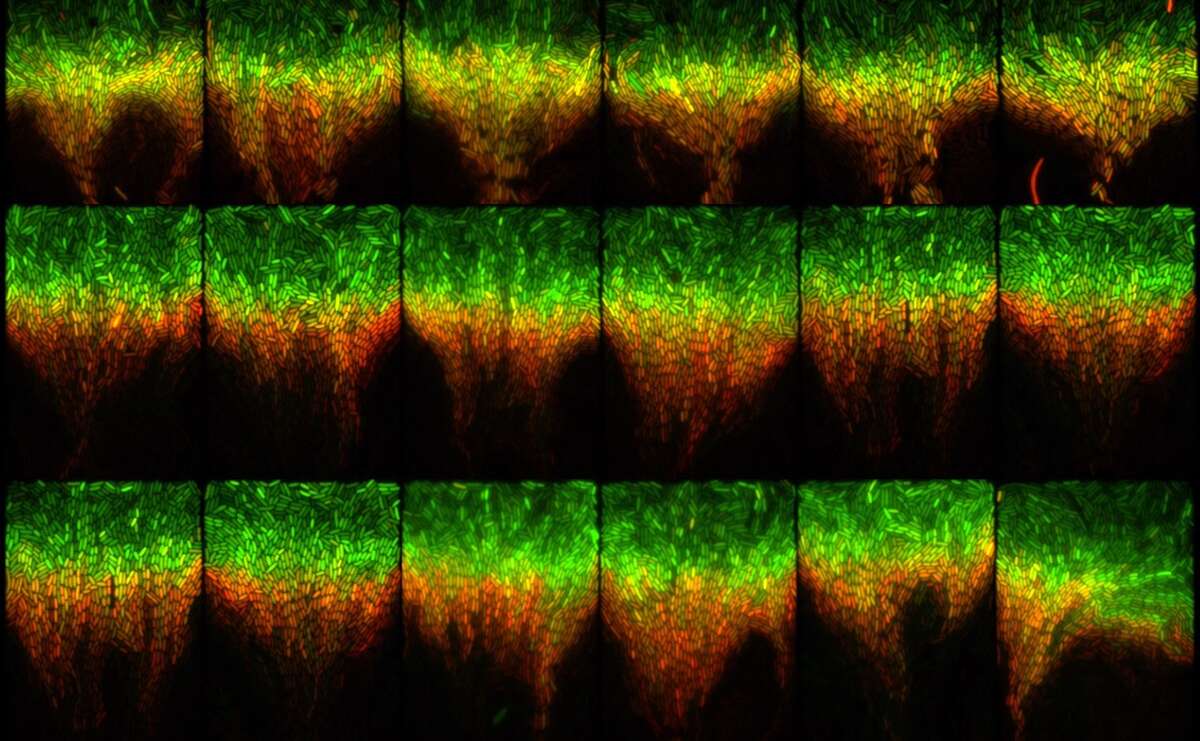Main Content
Systems ecology of bacterial biofilms
We use interdisciplinary approaches to study how interactions between bacterial cells affect the dynamics of multispecies biofilms.
Multispecies biofilms are of critical importance for the well-being of humans and the planet: they are major players in biogeochemical cycles, affect the health of multicellular organisms, and are essential for many industrial applications. Yet despite their importance we still have a poor understanding of how these multispecies biofilms function.
Properties of biofilms arise from interactions between cells
Cells in biofilms interact by exchanging dozens of molecules that affect the growth and activity of nearby cells. Together, these interactions can significantly alter the growth and activity of the biofilm. To predict—and improve—how biofilms function it is thus essential to learn how cell-cell interactions affect the properties of biofilms.
Interdisciplinary approaches are needed to understand how biofilms function
We combine state of the art experimental and computational techniques: we use single-cell microscopy and transcriptomics to quantify the effect of cell-cell interactions and develop mathematical models to predict how these interactions affect the growth and activity of biofilms.
Multispecies biofilms are major cause of chronic infections
Chronic infections caused by multispecies biofilms are a leading cause of morality. Interactions between cells in these biofilms contribute to worse disease outcomes and treatment failure. We study how such interactions affect the dynamics of chronic lung infections. Our goal is to identify new strategies that can suppress biofilm growth or reduce antibiotic tolerance.
More information: vanvlietlab.ch
Team
PhD Students
Giulia Bottacin Biozentrum, Room: 10.Q3



